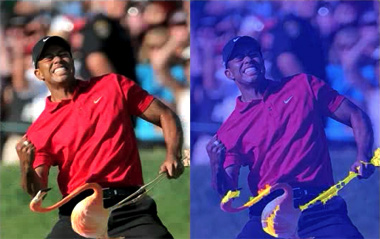COMPUTING RESEARCH HIGHLIGHT OF THE WEEK [July 20 - July 27]
Scientists Develop Method for Authenticating Digital Images by Analyzing "Noise"
The past decade has witnessed significant advances in digital image processing and computational photography, resulting in sophisticated image-editing software systems such as Adobe Photoshop and GNU Image Manipulation Program. Yet the ease of digital image manipulation has also posed new challenges, with digital images becoming more vulnerable than their non-digital counterparts to malicious tampering.
 University at Albany Computer Scientist Siwei Lyu and colleagues have identified a new method using "noise" to authenticate digital images. The research is supported by the National Science Foundation (NSF).
University at Albany Computer Scientist Siwei Lyu and colleagues have identified a new method using "noise" to authenticate digital images. The research is supported by the National Science Foundation (NSF).
The team presented its findings for exposing digital image splicing by measuring "noise" levels discerning discrepancies in photos at the IEEE International Conference on Computational Photography.
"Whenever a photo is manipulated digitally, the underlying characteristics of the image pixels are disturbed in a way that they become unnatural," Lyu explains. "Though human eyes may not be able to detect such subtle changes, they can be readily picked up by computer algorithms. The techniques developed aim to make sure that more significant manipulations can be detected."
Noise, the digital equivalent of film grain, exists in all digital photography, and is generally invisible to the human eye. Numerous factors during and after a photo is taken introduce noise, such as temperature and thermal conditions, sensor saturation, quantization, compression, and transmission. While an unaltered image is expected to have uniform noise strength across all pixels, inconsistencies in noise variances in altered photos become telltale evidence of tampering.
Using statistical and computational analysis, Lyu's team developed techniques that effectively measure noise strength across a photo to determine which parts of the photo originated from different sources. According to Lyu, the method is advantageous in that it does not explicitly rely on the knowledge of image format, camera model, or tampering procedure, and has a high level of detection accuracy.
Full Article...
Source: University at Albany, State University of New York
Researchers:
Siwei Lyu (University at Albany)
Agencies (that have supported the research):
National Science Foundation
‹ Current Highlight | Past Highlights ›
Computing Research Highlight of the Week is a service of the Computing Community Consortium and the Computing Research Association designed to highlight some of the exciting and important recent research results in the computing fields. Each week a new highlight is chosen by CRA and CCC staff and volunteers from submissions from the computing community. Want your research featured? Submit it!.




